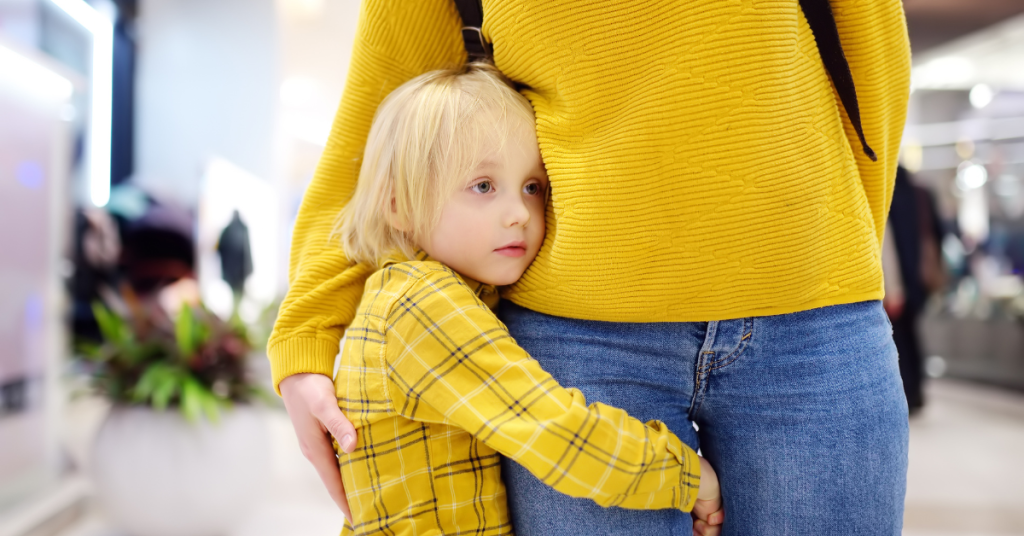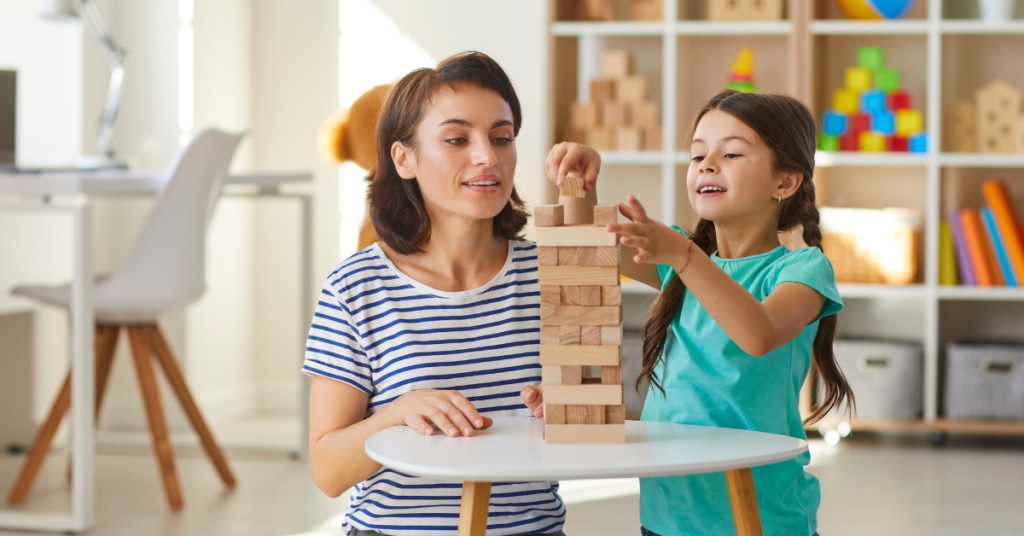
Separation Anxiety: Making Nursery Drop-Offs Easier

“Have a fun day!”
“I’ll be back soon!”
“You’re going to do great!”
“You’re safe here!”
These are the comforting words many parents say during drop-off, often while their child clings tightly, showing clear signs of separation anxiety and hoping you won’t walk away. It’s heartbreaking to see their little face filled with worry as they reach for you, and yes—those moments can feel just as hard for you as they are for them.
Experiencing separation anxiety is a normal part of early childhood. It often begins around six months of age, peaks near 18 months, and usually starts to fade as children grow older—often easing by the time they’re four or five. That said, these feelings can still show up from time to time, especially during big changes like starting at a new nursery, moving up a room, or even just after a long weekend at home.
Learning to say goodbye takes practice. It’s a skill that children develop gradually, with love and reassurance from the grown-ups they trust most. Helping your child feel secure during these transitions plays a big part in building their independence and confidence. With your steady support, separation anxiety becomes a challenge they can learn to manage.
Separation Anxiety: Why It’s Normal and How Daycare Helps Kids Thrive
It’s completely natural to feel a bit uneasy when leaving your child at daycare. You’re not alone—many parents feel the same, and so do many children. These feelings are part of the journey, and they don’t mean anything is wrong. In fact, going to daycare can bring wonderful benefits that make the tough goodbyes worthwhile.
- Making Friends: Daycare gives children the chance to play and connect with other kids. This helps them learn how to share, take turns, and build friendships.
- Gaining Confidence: Spending time apart from parents helps children learn how to do things on their own. This boosts their sense of independence.
- Handling Big Feelings: Being in a new place and saying goodbye helps children practice handling their emotions and adjusting to changes. These are big skills that will help them as they grow.
Getting ready for drop-off ahead of time can really help the morning go more smoothly. When parents understand that these experiences help their child learn and grow, it becomes a little easier to say goodbye. Your calm and confidence can help your child feel more secure—and that can make all the difference.
Gentle Ways to Help Your Child Feel Secure During Drop-Offs
When dealing with separation anxiety, small steps can make a big difference. Children often need extra comfort and encouragement as they adjust to being away from you. Here are some thoughtful ideas to help them settle into their day with more ease and confidence.
- Stay Positive and Reassuring
Your mood sets the tone. When you show a calm, upbeat attitude, it helps your child feel more at ease. In the morning, talk about the fun they might have—perhaps they’ll paint, build something, or see their favorite friends or teachers. Mention familiar names and faces they like. If they’re starting at a new center or school, chat about things they might enjoy there, like the playground or reading corner.
You can also build excitement by creating a “first day” sign with their name, age, and favorite things. When you arrive, gently guide them to an activity or introduce them to their educator so they feel supported. Be sure to say a short and loving goodbye—this helps avoid confusion and shows them you trust they’ll be okay, which is key in easing separation anxiety.
Five Simple Ways to Support a Smoother Morning:
- Get Ready Ahead of Time: Avoid rushing by having everything packed and ready—clothes, lunch, and bag. If they’re old enough, let your child help prepare their things to feel involved.
- Read Together: Choose books about saying goodbye, going to school, or handling separation anxiety. Stories can help children understand their feelings. You can also share your own childhood experiences to connect with them.
- Practice and Explore: If they’re heading to a new place, take practice visits or show them photos. Point out fun details like toys or art supplies to spark interest.
- Use Play for Preparation: Role-playing the morning routine with stuffed animals or action figures can help children feel in control. Let them take on the role of teacher or parent—it’s both fun and empowering.
- Create a Joyful Morning Routine: Keep things light and predictable. A visual chart of the morning steps or a cheerful playlist can bring a sense of rhythm and fun to the start of their day.
- Create a Comforting Goodbye Routine
One helpful way to ease separation anxiety is by having a special goodbye ritual. This might be a hug, a high five, or a whispered phrase you always say before parting. Children find comfort in routines—they offer a sense of safety and predictability. Keep your goodbye brief but consistent, and stick to the same routine each day so your child knows what to expect. Over time, these small, loving actions can help make drop-offs feel safer and more manageable.

- Creating Goodbye Rituals to Ease Separation Anxiety
Saying goodbye doesn’t have to be a tearful experience every morning. Establishing a loving and predictable goodbye routine can help your child feel more at ease and reduce the effects of separation anxiety. These small moments of connection remind children that even though you’re leaving, you’ll always come back.
Here are a few sweet and simple goodbye ideas you might like to try:
- Share a hug, kiss, high-five, or a fun handshake that’s just for the two of you.
- Sing a silly version of a favorite song together—maybe change the words to include their name or something they love.
- Use the same cheerful phrase each time, like “See you soon, sunshine!” or “Catch you later, alligator!”
- Draw a tiny heart, star, or smiley face on their hand so they can look at it and remember you during the day.
Once you choose a ritual, try to stick with it. Keep it short and sweet—just a few minutes is usually enough. If your child is upset, give them a gentle cuddle, but try not to linger too long. Leaving right after the goodbye routine can help them feel more secure. And always say goodbye—sneaking out may seem easier in the moment, but it can actually increase separation anxiety. Consistency is key, especially if different people handle drop-off—make sure everyone follows the same ritual.
- Helping Children Grow Through Small Moments Apart
For some kids, even being in a different room from their parent can feel overwhelming. That’s why separation anxiety can be especially intense when they begin care or school. But there are gentle ways to help build their confidence before those big steps.
Start by practicing little separations at home. You might step into another room for a few minutes, letting them know you’ll be right back. Over time, this helps them learn that separations don’t last forever. For toddlers or babies, ensure someone else is nearby to keep them company while you step away.
As children grow, encourage small tasks they can do alone. Maybe they can carry something to another part of the house or help by getting a napkin at a café. Praise them warmly: “Wow, you did that all by yourself! I’m so proud of you!” These small victories build confidence and help children feel more secure during longer separations.
By gently guiding your child through these moments, you’re helping them gain the tools to manage separation anxiety in a healthy and positive way.
- Comforting and Communicating Your Child Through Separation Anxiety
It’s perfectly okay for your child to feel upset at drop-off time—and it’s just as okay for you to comfort them. Separation anxiety can be tough, but your support and calm reassurance can make a big difference. Let your child know that their feelings are normal, and that it’s alright to be sad or worried. One of the most powerful things you can say is, “I’ll be back,” because deep down, that’s often what they need to hear the most.
If your child is old enough, gently ask them to share what’s making them feel scared or uneasy. Talking about these feelings helps them understand and begin to manage their emotions. At drop-off, try suggesting something they can look forward to, like playing with a favorite toy or joining a friend. If they take that brave step, be sure to praise their courage—it boosts confidence and helps them feel proud.
For children who are six and older, guided activities—like those found in programs such as Fear-Less Triple P Online—can be helpful in teaching them how to manage worries and face challenges with confidence.
Separation anxiety doesn’t only affect children—it can stir up big feelings in parents and caregivers, too. It’s completely normal to feel concerned after a tearful goodbye. Staying in touch with your child’s school or care center can really help. Don’t hesitate to speak with teachers or staff about your child’s feelings. You’re all on the same team, working together to make things smoother.
Some places may suggest bringing along a comforting object from home, like a soft toy or blanket. Educators often have gentle ways of helping children feel better—such as inviting them to play right away or sitting with them for a moment. If you ever feel uneasy after drop-off, it’s okay to ask the center for a quick update later in the day. More often than not, they’ll reassure you with a smile and say, “They were just fine a few minutes after you left.”
To help ease separation anxiety, it’s important that your child knows they can count on you to return. Always follow through on what you tell them. Before you leave, be clear about who will pick them up and when. For little ones, use simple markers like “after snack time” or “after nap” instead of exact times. And if someone else is collecting them, let your child know when and where they’ll see you again. That trust and honesty help build the security they need to feel okay with being apart—even just for a little while.
Closing Thoughts: Growing Together Through Separation Anxiety
As educators, we truly understand that separation anxiety can be a big emotional step for young children—and for their parents, too. Our goal is to create a safe, welcoming space where each child feels secure, valued, and cared for. We do this by tuning in to their emotions, offering comfort when it’s needed, and building trusting relationships from the very start. And yes, sometimes a warm cuddle really can work wonders!
For older children, we often use familiar routines to help them understand when their parent will be back and what they can do until then. These small but meaningful tools help ease separation anxiety and show children that it’s okay to feel uncertain sometimes—because with a little support, they can get through it.
We’re proud to be part of each child’s journey toward greater independence and emotional well-being. As they settle in, we see them become more confident and brave, ready to explore and learn in their own unique way.
It’s completely normal to feel nervous when your child is away from you. But please take comfort in knowing that you’ve made thoughtful, loving choices—by carefully selecting a center where your child is surrounded by experienced, nurturing people. You’ve chosen a place trusted by hundreds of families, and we’re honored to walk alongside you and your child through this special time of growth.
Read our latest article: “Toddler Milestones to Watch During Nursery Years“